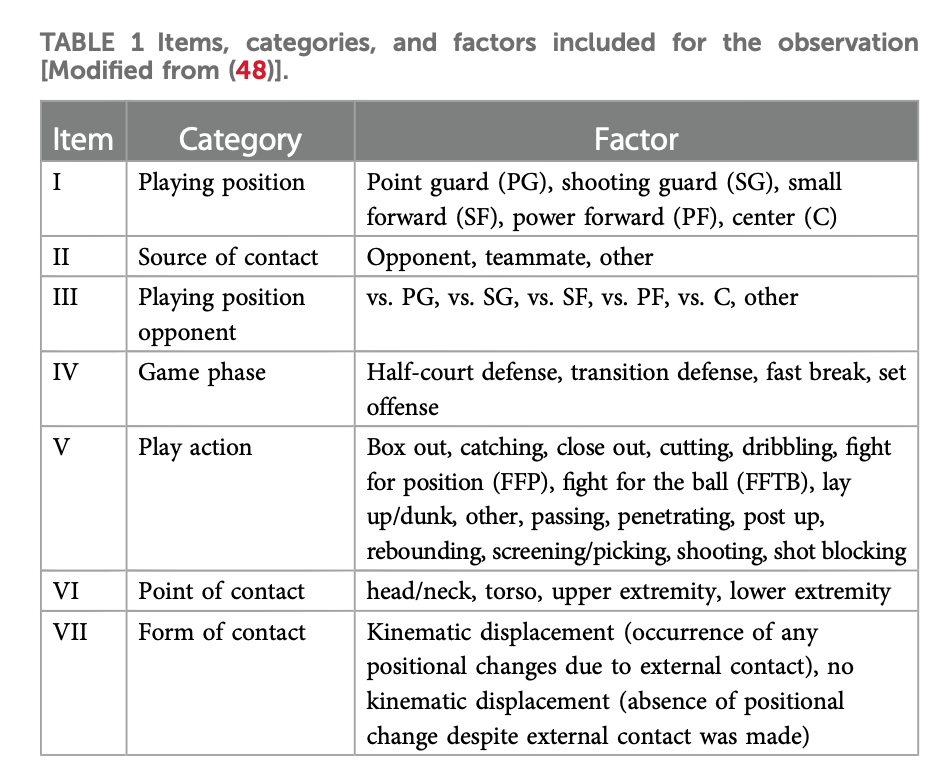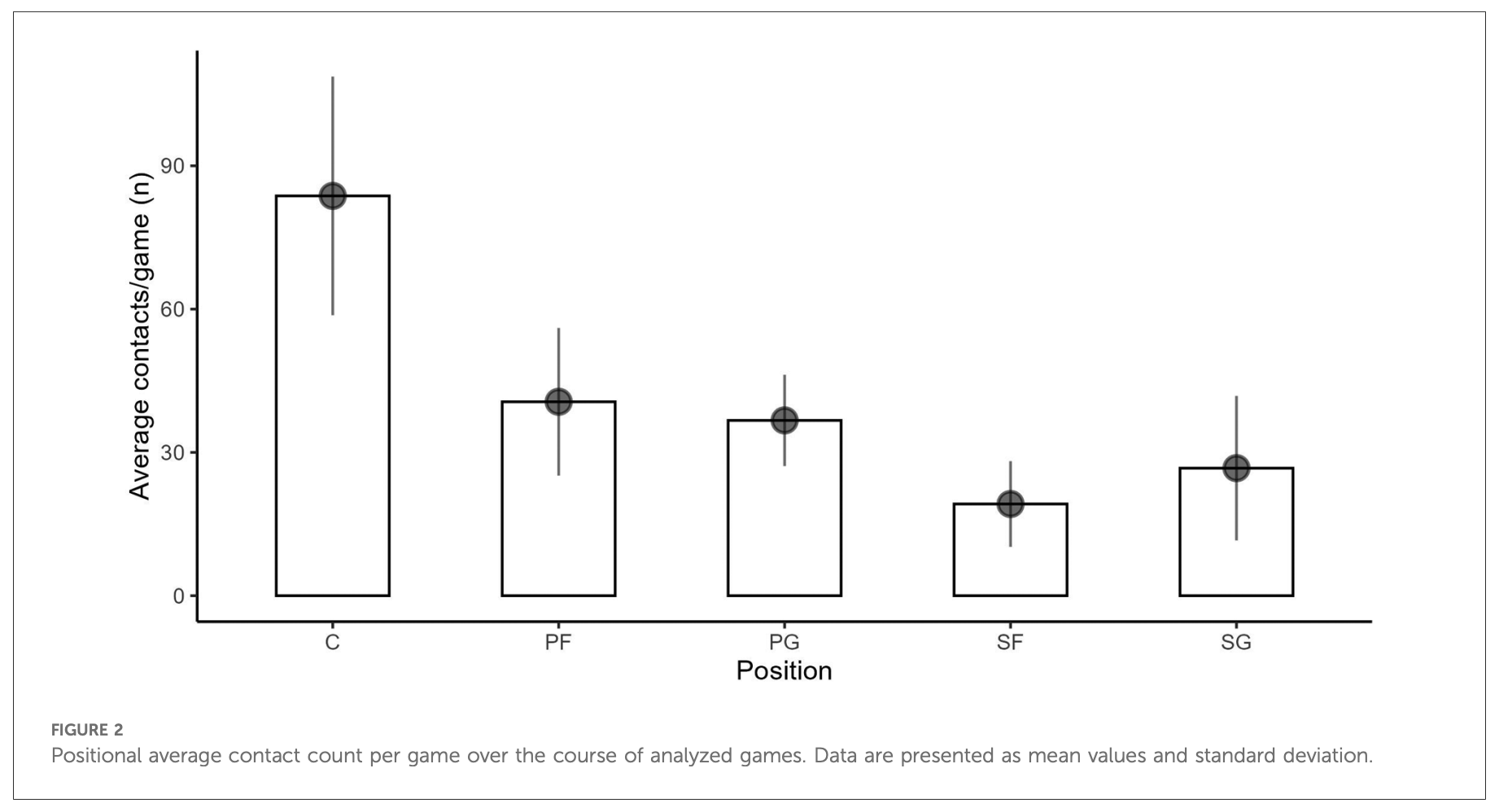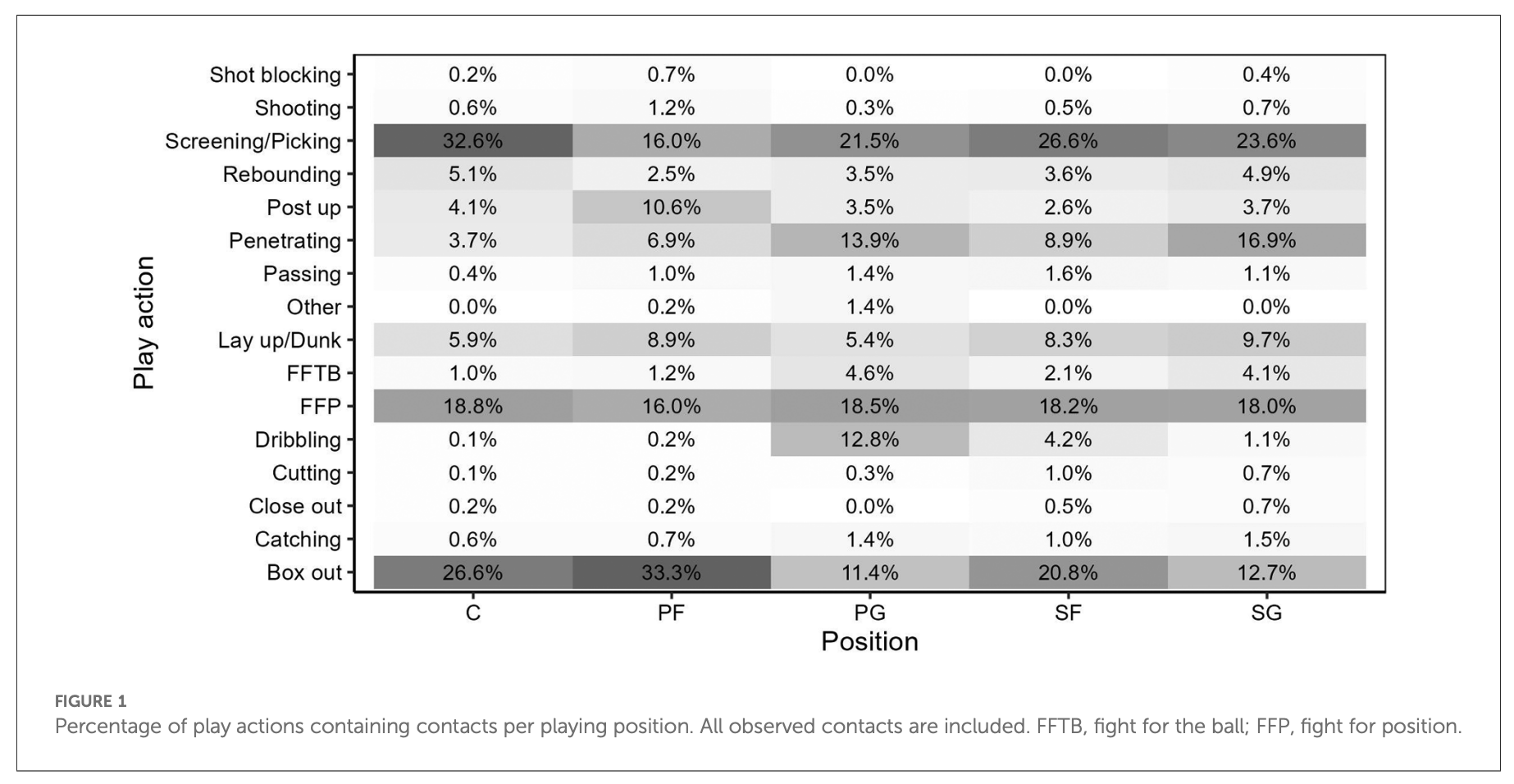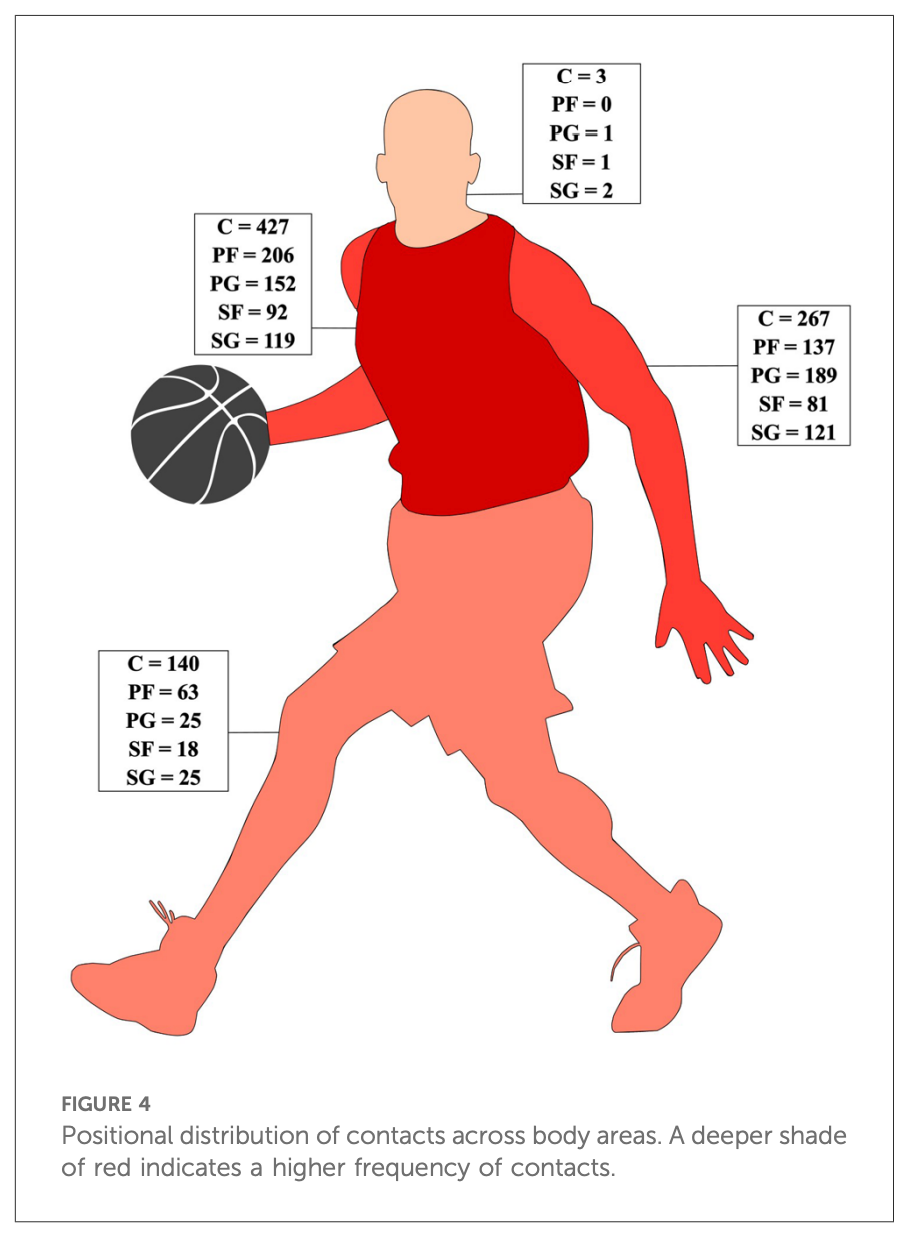Modern basketball play involves frequent physical contact.
Understanding the frequency, type, and positional context of contacts can help coaches refine training, load monitoring, and recovery strategies.
The study aimed to quantify and characterize physical contacts in professional male basketball games, providing positional profiles for performance and injury prevention.
When and where do basketball players experience physical contact during professional games, and how do these patterns differ by playing position?
What Did the Researchers Do?
Design
- Mixed-methods approach with video analysis of 10 professional men’s games in Germany’s top league (2020–2021 season).
- 19 players on one team, analyzed when on court; categorized as PG, SG, SF, PF, or C.
Data Collection
- Two expert raters identified and categorized 2,069 meaningful contacts.
- Contacts had to be impactful (screens, box outs, post-ups, etc.), not incidental touches.
Seven key variables were coded:
- Player position
- Source of contact
- Opponent position
- Game phase (half-court defense, set offense, fast break, transition defense)
- Play action (e.g., screening, box out, fight for position)
- Body part contacted
- Whether contact caused kinematic displacement (positional change)

What Were the Results?
Total Contacts ➔ 2,069 in 10 games.
Position Breakdown
- Centers: 40.5% of all contacts
- PF: 19.6%
- PG: 17.7%
- SG: 12.9%
- SF: 9.3%

Game Phase
- Set offense: 48.9% of contacts
- Half-court defense: 46.1%
- Fast breaks: 2.9%
- Transition defense: 2.2%
Top Play Actions Leading to Contact
- Screening/picking: 25.7%
- Box outs: 22.9%
- Fight for position: 18%

Body Regions Affected
- Torso: 48.1%
- Upper extremities: 38.4%
- Lower extremities: 13.1%
- Head/neck: 0.3%

Positional Trends
- Centers had most contact in box outs and post-ups.
- PGs had unusually high contact rates during screens.
- SGs saw more contact during penetrations.
- PFs had increased contact in post-ups.
Kinematic Displacement ➔ 81.4% of contacts caused a positional change.
Suggested Screenshot: Figures showing positional contact frequency and play actions by position.
What Does This Mean?
- Basketball involves frequent and position-specific contact loads, with Centers experiencing the heaviest contact volume.
- The most physical moments occur during organized half-court play, particularly in screens, box-outs, and positional battles.
- Contact predominantly affects the torso and upper limbs, which are key areas for strength, resilience, and injury prevention.
- Monitoring contacts alongside traditional load metrics provides a more comprehensive view of game demands.
Limitations
- Single team and league; findings may not generalize to all levels, genders, or countries.
- Video analysis only captures visible contacts; some may be missed due to the camera's angle.
- Only the initial contact in a sequence was recorded.
Coach’s Takeaway
- Contacts are part of the load equation ➔ Don’t rely solely on movement metrics.
- Position-specific preparation is key ➔ Centers and PFs need high exposure to contested rebounding and post-up collisions; Guards should be trained for repeated screen contact and penetration resistance.
- Recovery strategies should account for contusion and collision fatigue ➔ Not just the classic running-based fatigue markers.
I hope this helps,
Ramsey
Reference
Wellm D, Jäger J, Zentgraf K. (2024). Dismissing the idea that basketball is a “contactless” sport: quantifying contacts during professional gameplay. Frontiers in Sports and Active Living, 6:1419088.




